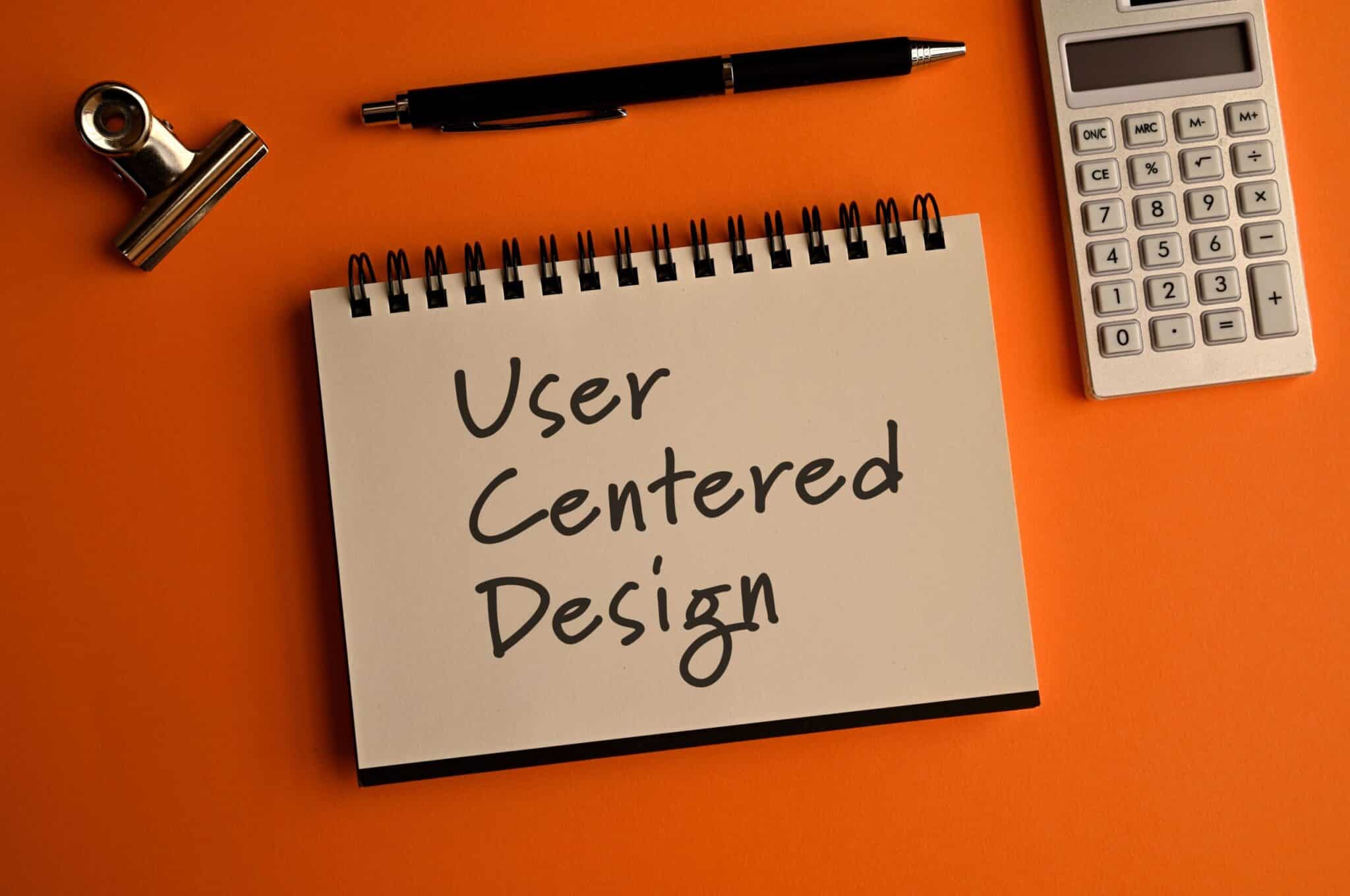The importance of user-centered design in software development is becoming increasingly apparent. It’s no longer enough to simply create a product and hope customers will love it.
Instead, developers must actively understand user needs, craft solutions that solve real problems, and ensure their products are accessible and easy to use.
Not understanding the user’s needs can result in an app or website that is confusing, difficult to navigate, and ultimately a total flop.
I’ve had the privilege of working with user-centered design teams who have taken their job seriously for years. I’ve seen firsthand how powerful and effective it can be when done right.
So let’s get into the details. We’ll review everything you need to know about user-centered design, from understanding user needs and designing for them to testing and implementation.
What is User-Centered Design?
Having a great design is essential to business growth and success.
User-centered design (UCD) is an iterative design process that focuses on the user’s needs and preferences.
It involves understanding users’ goals, motivations, abilities, and behaviors to create a product or service that meets their needs.
The goal of UCD is to build products that are intuitive and easy to use. This involves incorporating user feedback throughout the design process and ensuring the user experience is at the heart of every decision.
In short, UCD is all about ensuring a product or service is as accessible and easy to use as possible—without sacrificing functionality or quality.
So why should developers care about user-centered design? Let’s get into it!
Why is User-Centered Design Important?

As you start creating cutting-edge software, it’s important to keep your users in mind. It is crucial to design with your users in mind, but it can sometimes be challenging.
One of the biggest mistakes businesses make is assuming they know what users want without understanding them. User-centered design requires a deep understanding of users’ needs and preferences, so it’s important to take the time to truly understand them.
If businesses don’t prioritize user-centered design, the consequences can be pretty dire. According to a report by Standish Group, 66% of software development projects fail due to poor user-centered design.
That’s a huge number, and it shows just how important it is to keep your users at the forefront of your design process.
However, user-centered design principles are not exclusively applicable to large tech companies. Even startups and small businesses can reap the rewards of incorporating them into their design processes.
For instance, when a startup company named Buffer adopted user-centered design, it observed a significant increase of four times in its conversion rates.
This substantial difference illustrates the potential benefits that can result from prioritizing user-centered design.
So, if you’re looking to create successful software, prioritizing user-centered design is crucial.
By doing so, you’ll not only be creating software that users actually want to use, but you’ll also be increasing your chances of success.
User-Centered Design Benefits
When it comes to competent software development services for startups, user-centered design is crucial.
Creating software products that meet the needs of users is critical for the success of any startup.
UCD is especially important for startups, providing a competitive advantage by creating products that meet user needs.
Below are the various benefits of user-centered design in startup software development.
Boost User Satisfaction with a User-Focused Approach
User-centered design prioritizes user satisfaction by keeping the user at the center of the design process.
According to a study by Forrester Research, a user-centered design approach can increase customer conversion rates by up to 400%.
This demonstrates the importance of creating products that cater to user needs and preferences.
Boosting user satisfaction is crucial for any software development project, and a user-focused approach can help achieve this goal.
This can be achieved by doing the following:
- Creating user personas to understand user motivations and behaviors
- Using design thinking to create solutions that meet user needs
- Testing early and often to identify issues and make improvements
- Continuously improving based on user feedback to meet evolving user needs
By prioritizing a user-focused approach, software development can create solutions that delight users and drive business success.
Design with Empathy for Users
Empathy is crucial for creating successful products. As Chris Bank, co-founder of UXPin, says, “empathy is the foundation of design thinking. Without understanding users, there is no way to design a product that will truly meet their needs.”
Designing with empathy means understanding and addressing the users’ pain points and preferences.
When you design with empathy, you create a product that solves real problems and meets the users’ needs.
Empathy marketing helps you put yourself in the user’s shoes and design the product from their perspective. By designing with empathy, you can create a product that truly meets the needs of your users.
Reduce Your Development Costs and Save Time and Money
According to a study by the Design Management Institute, companies that prioritize design outperform their peers by as much as 228%.
By using user-centered design, startups can create products that are more effective and efficient, leading to increased profits and growth.
User-centered design helps startups save time and money by reducing development costs.
By designing with users in mind, you can identify potential issues early in the process before they become costly problems.
User-centered design also helps you focus on the features and functions that are most important to users, which can reduce development time and costs.
Gain a Competitive Advantage by Creating Products that Meet User Needs
User-centered design provides a competitive advantage by creating products that meet user needs. In a survey of 1,500 CEOs conducted by IBM, 60% of respondents identified creativity as the most important leadership quality for success.
User-centered design is a creative process that allows startups to create products that truly meet the needs of their users, providing a competitive advantage in the market.
By understanding the needs, goals, and preferences of users, you can create products that stand out from the competition.
Improve Product Usability and Accessibility
According to a study by the World Health Organization, there are over 1 billion people worldwide with disabilities.
By designing products that are accessible to everyone, startups can tap into a large, underserved market, leading to increased revenue and growth.
An experienced custom software development agency finds it important as they can prioritize user-centered design that prioritizes usability and accessibility, making products easier and more enjoyable to use for everyone.
What is the User-Centered Design Process?

The user-centered design process consists of the following steps:
- Identify need
- Specify context of use
- Specify requirements
- Produce design solutions
- Evaluate designs
Identify Need
The first step in the user-centered design process is to identify the need. This requires designers to focus on understanding the specific problems and frustrations that users encounter with existing products or services.
Designers typically use various research techniques to gather insights, such as conducting surveys, interviews, and observations of users interacting with products or services.
By identifying the needs of users, designers can begin to develop a better understanding of the user experience and create products that address those needs.
This step in the design process is crucial because it sets the foundation for the rest of the design process and ensures that the final product will be aligned with the needs and expectations of the end-users.
Specify Context of Use
The next step in the user-centered design process is to specify the context of use. This involves analyzing and understanding the environment in which users will be interacting with the product or service.
Designers typically consider factors such as the physical environment, available resources, time constraints, and user preferences.
By understanding these elements, designers can develop a better understanding of how best to design for the specific context of use.
Specify Requirements
The third step in the user-centered design process is to specify requirements. This involves creating a set of requirements that must be met by the final product or service.
The requirements should be based on insights from research conducted during the “identify need” phase.
These insights should include the following:
- User feedback
- Industry standards
- Best practices
This helps ensure that the final product will meet all of the necessary criteria and is aligned with the needs and expectations of users.
Produce Design Solutions
The fourth step in the user-centered design process is to produce design solutions. This involves developing a range of possible design solutions, each tailored to the specific context of use.
Designers typically create various wireframes or prototypes to test out different ideas and evaluate how well they meet the specified requirements.
Through this process, designers can identify which designs work best for their particular context, allowing them to refine their solution until it meets all of their specified requirements.
Evaluate Designs
The final step in the user-centered design process is to evaluate designs. This involves testing various aspects of the product or service with users and collecting feedback.
Designers typically use a range of methods, such as usability tests, surveys, interviews, and focus groups, to ensure that their design is effective at addressing the needs of the users. By gathering this data, designers can make informed decisions about how best to improve the design before it’s released.
By following these five steps in the user-centered design process, startups can create products that are tailored to their specific context of use and ensure they meet the exact needs and expectations of users.
User-Centered Design Examples?
Now that we’ve gone through the five steps of user-centered design, let’s look at some specific examples.
One example is Airbnb, an online marketplace for booking short-term accommodations.
Airbnb conducted extensive research to understand their users’ needs and preferences and used this information to create a design tailored to their user base.
They incorporated features such as detailed listing descriptions, reviews from past guests, and high-quality photos to ensure that users could easily find the right accommodation for them.
Another example is Amazon, which developed an intuitive search experience based on insights gathered from customer surveys and interviews.
By understanding how customers interacted with their search feature, Amazon was able to make improvements such as adding auto-complete suggestions as well as incorporating filters so users could narrow down their search results.
These are just two examples of how user-centered design can be used to create products and services that meet users’ exact needs and expectations.
Wrap Up
In conclusion, user-centered design is a powerful tool for startups to create products and services that meet users’ exact needs and expectations.
By utilizing the information outlined in this article, startups can ensure their designs are tailored to their specific context of use and align with user preferences.
This helps create products that truly make an impact on user experience.
So get out there and start designing with your users in mind! Do you have any questions? If so, let us know in the comments below.
Frequently Asked Questions
The 4 elements of user-centered design are the following:
1. Understand user needs and preferences
2. Develop usage scenarios
3. Produce design solutions
4. Evaluate designs
The 5 stages of user-centered design are the following:
1. Understand context of use
2. Identify user needs and preferences
3. Develop usage scenarios
4. Produce design solutions
5. Evaluate designs
The main difference between UX and UCD is that UX (User Experience) focuses on the user’s overall experience with a product. In contrast, UCD (User-Centered Design) specifically focuses on understanding user needs and preferences to create designs tailored to their context of use.
UX places more emphasis on creating an enjoyable, intuitive experience for users, while UCD places more emphasis on understanding user needs and developing solutions based on this understanding. Both approaches help create better products and services but take different methods to achieve the same goal.
Usability testing is used in user-centered design to assess how easy or difficult it is for users to complete tasks using a website or application. The purpose of usability testing is to identify any issues with a product’s design or functionality that could prevent users from achieving their desired outcomes.
Usability tests involve real users attempting to complete tasks using the product and observing and recording their interactions. This helps designers gain valuable insights into user behavior, which can be used to improve the product or service.


